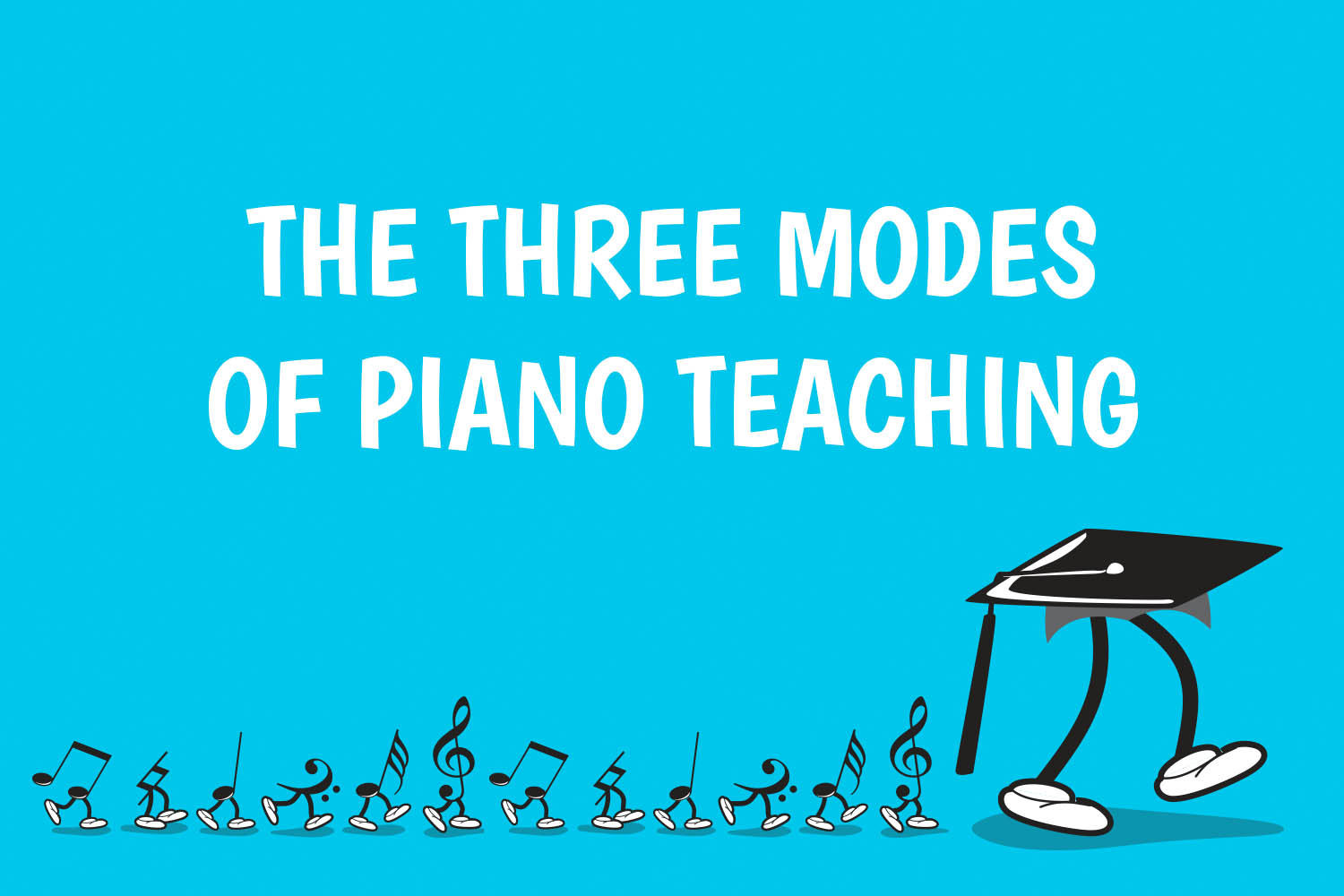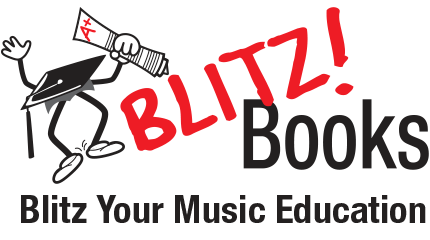The Three Modes of Piano Teaching

I’m pretty sure I have never taught the same piano lesson twice in a row. Even if my student – you know – DIDN’T PRACTICE ONE BIT1… I tend to start new things, rather than reiterate last week’s lesson. So, whether my student did absolutely nothing at home all week2, or was away at camp, or practised his/her head off… every lesson is different. However, I’ve been thinking that there are three distinct types of lessons, depending on the progress and goals of the student. I see our lessons as being in a certain ‘mode’ with different students at different times.
Holistic Mode
Holistic Mode is a joyous mode. It is most often the way we start out with our beginner students, who come with a clean slate and hopefully not too much parental pressure (hmm, that’s another blog post). In Holistic Mode we are encouraging our students to listen, sing, play, read, draw, write and move to music. We incorporate many off-bench activities and games, we expose them to a wide range of musical styles and genres, and we see what they are capable of and move them at a comfortable pace. In Holistic Mode we can immerse our students in music and help them to love it – and all of this contributes to a well-rounded musician, no matter what age. I love being in this mode as I feel we can flit from activity to activity as it suits the students, as well as spend luxurious amounts of time on activities they love; in short, Holistic Mode allows precious learning moments to happen without having to interrupt them due to being pressured to get something specific done.
Zoomed-In Mode
Zoomed-In mode starts a little down the track for beginners, and we need a lot of this in most lessons with intermediate and advanced students. The repertoire is longer, we want to concentrate on a particular skill, or there are specific areas of technique that need some work. In Zoomed-In Mode, we are often focusing on problem areas: technique, difficult passages, how to practice, working towards a specific goal.
Some students absolutely relish this type of focus, and love to spend every lesson getting into the nitty-gritty of how to solve a problem. After all, practising piano is all about forming habits, and in Zoomed-In Mode we are teaching students how to form good habits at home.
The only drawback of this mode is the time it takes time to zoom in on a specific problem and fix it. As a result, there might be very little or no time remaining to include ‘holistic’ activities such as to play duets with us just for fun, nut out a chord chart for their favourite pop song, or play a game. For students who respond to variety and fresh activities, we wouldn’t want every lesson to be in Zoomed-In Mode.
Looming Deadline Mode
Looming Deadline Mode is when there is a performance or exam coming up soon (and in John Bloomfield’s excellent talk on How to take a Lesson Effectively he refers to this mode as “I have to play it Tuesday”). In countries like Australia and the UK, where there is a strong exam culture, students are often existing from one exam to the next.
Parental pressure to ‘get the next exam done’ means we not only spend too little time in Zoomed-In Mode, we can end up perpetually in Looming Deadline Mode. This is a problem.
Looming Deadline Mode is the LEAST HOLISTIC and LEAST FOCUSED learning environment. We cannot delve deeply and joyously into any activity that is not to do with the exam, or scholarship audition, or whatever other deadline is coming up quickly. There is no time for discussion or unpacking technical struggles. We constantly have to pick our battles; we have no time to make fundamental changes that would ultimately make the piece sound a lot better, we just have to find adequate short term solutions. Not only that, we are offering solutions with no time to stop, reflect and help the student to arrive at these solutions themselves.
It’s not just parental pressure either. Our overscheduled students do it to themselves. When that exam is months away, there’s plenty of time, come on! They need to focus on soccer, gymnastics, swimming, tennis, trapeze and tutoring! But when the exam is three weeks away… OH! Now it’s time to practice – help me! I want to get an A+! Very often, students don’t practice unless there is a Looming Deadline.
When we look at this point in the context of every lesson being in Looming Deadline Mode, this then generates the least useful kind of practice at home, because nothing is detailed enough in the lesson.
To properly prepare for an exam, we must spend an appropriate amount of time in Zoomed-In Mode, a short time in Looming Deadline Mode, and after that exam is over it’s nice to return to Holistic Mode for a while.
Can we have multiple modes in one lesson?
Yes, absolutely! However, it takes planning and structure to move seamlessly from one mode to another. It requires a lesson that is probably longer than 30 minutes. I have recently switched almost all of my students to 45 mins – it’s so much better! And most of all, it takes an effort in communication and scheduling over the year, in order not to bow to student or parental pressure which results in creating deadlines that are too close together.
In an ideal world, lessons would consist mostly of Holistic Mode and Zoomed-In Mode, with only a few lessons each year in Looming Deadline mode. A well-balanced music education means that some of each lesson is focused on specific areas, some on preparing for a hopefully-not-too-looming deadline, and then some time on the holistic stuff – because this is what is ultimately going to create the real love of music and an ability to take their hard-fought piano skills into adulthood.
Three takeaways for your studio
As you’ve probably noticed, I think three is a great number, so here are three things you can try this year in your studio to make the most of each type of lesson:
- There may be many Holistic Mode activities you have heard about but haven’t tried yet 3: Check out Leila Viss’ online shop for fabulous games and off-bench activities; if you have an iPad make use of the excellent Piano Maestro and Sproutbeat apps; check out my online repertoire series at roterepertoire.com for contemporary pieces that teach sight reading and creativity (this is also available in book form!).
- When you go to Zoomed-In mode during a lesson, perhaps keep track of the time spent. Plan the lesson with the student so that there is time left for some Holistic Mode!
- Have a think about each student and where they are in their piano ‘careers’. Are they constantly juggling exams, eisteddfods and auditions? They might be spending too much time in Looming Deadline Mode. Increasing the lesson time and/or decreasing the deadlines will allow for some time spent in the other two modes. Most of our students will ultimately be happier if they can experience spontaneous learning moments without the pressure of assessment.
If you have more suggestions of ways to handle any or all of these modes/types of lessons, please leave a comment!

Yes to all of the above AND I can tell you right now that my favorite lessons are….wait for it….HOLISTIC mode! Well said, Sam. And, thanks for including a link to my site in your post. I appreciate it 😉
You are most welcome! Please do share 🙂